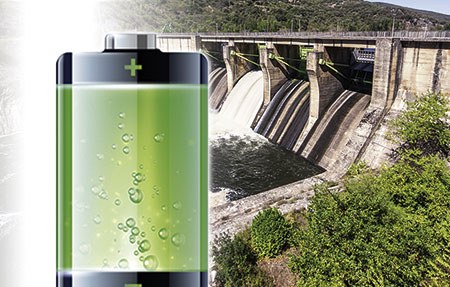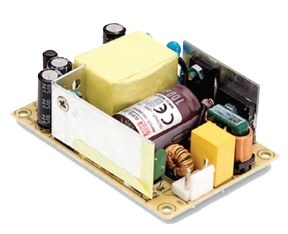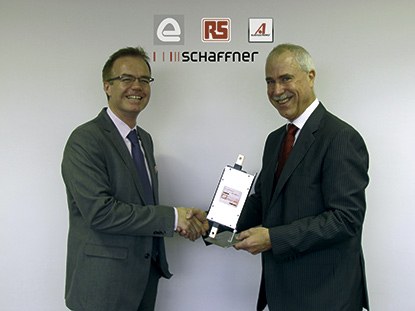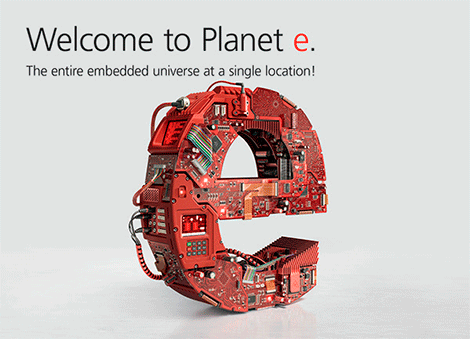“Renewable Energies”: one concept, infinite possibilities: from “Smart Grid” communication charging infrastructures (smart grids) for electric vehicles to energy storage. When developing renewable energy applications, you not only need a partner who can supply a large volume of electronic components, but who can also advise and support you in the design phase. That is exactly what the experts from the EBV “Renewable Energies” team have set out to do.
The two-way exchange of information and data between energy producers and final consumers within the framework of energy transfer is what makes us consider a system to be truly “smart”. A large number of electronic components make this intelligence possible: specific microcontrollers for electricity meters, power line modems, high-performance processors with communication interfaces, efficient utility services, precise analog circuits or high-voltage semiconductors for transfer and transformation of electric current. Therefore, the requirements facing the “Renewable Energies” team are very varied and complex, as Karl Lehnhoff, Vertical Director Segment Renewable Energies at EBV Elektronik explains. According to Lehnhoff, the target group for EBV Renewable Energies are all companies that carry out their activity in energy generation, from photovoltaic energy, through wind power to biogas. It is worth adding the "energy transmission" sector with high voltage networks, substations and process control systems, as well as network automation, measurement of the state of the network, transformation of high voltage into low voltage and adjustable local network transformers . In addition, renewable energy experts are also dedicated to the field of energy storage, including charging stations for electric vehicles.
And we must not forget that an important aspect for automation throughout the "smart grid" is communication and, above all, its security. “This is not only important for “smart meters” or smart meters, but also for all billing-relevant meters and data concentrators,” emphasizes EBV's Lehnhoff.
Dedication and integration in networks
For EBV, renewable energies have been one of its priorities for years and it has integrated them into its vertical business structure under the name "Renewable Energies". The segments related to this market are Automotive, Consumer, Renewable Energies, Healthcare and HighRel. Technology-oriented segments include EBV FPGA, RF & Wireless, LightSpeed and Identification.
A business in renewables requires dedicated experts on the one hand and a vast network integrating all “related disciplines” on the other to be able to provide comprehensive and appropriate customer support. EBV's support starts, if desired, from the very beginning of a project: Experts from the Renewable Energies segment advise customers on the choice of the right technology and the right electronic components and provide troubleshooting help on technical issues that may arise during the development or production of new devices.
In this way, five full-time specialists deal expressly with renewable energies. They receive support on their part from more than 100 application engineers and experts from all over Europe from other vertical segments. Of course, we don't want to create a parallel sales organization with the vertical segments, but rather combine know-how and resources. In each case we decide whose help we need. The industrial sectors are too interconnected to be able to separate them clearly”, explains Lehnhoff. “For this reason we work closely together, even making joint customer visits. In principle, the client does not care how we organize ourselves. What matters to you is getting the right help for your application.” After all, explains Lehnhoff, the client does not allow himself to be boxed into a segment. “For us it is the order of the day to broaden our horizons.” There are many examples of interdisciplinary collaboration of EBV teams: for example, when designing a "smart meter" the question of communication in the "smart home" arises, therefore the knowledge of RF experts is also required & Wireless. The measuring technology with which the operating status can be monitored is integrated into the dimmable local mains transformer. It is really about Condition Monitoring in industrial automation, so in this type of project there are points of connection both with the vertical segment "Identification" and with the partners of the segment "RF&Wireless" when it comes to communication or wireless connection. between the adjustable local network transformers. Also at charging stations for electric vehicles, collaboration between the experts from Renewable Energies and the automotive specialists from EBV arises naturally. They contribute their knowledge about the regulations that must be complied with in automotive matters. “The client does not come asking for a product, but a solution for his system. This consists not only of the hardware, we must also master the keys of the software and know the norms and standards relevant to that specific application.” And precisely by saying this, Lehnhoff puts his finger on the sore, since in some sectors of renewable energy there is a problem that there is no coherent regulation. For example, in the wind and photovoltaic energy sector there are standards for short circuits that differ in different countries. According to Lehnhoff, in the field of measurement this is even more complex: "Especially in the security sector there is still nothing regulated." Five to ten years will still have to pass. We can also see that the debate on the BSI in Germany has also invited reflection on the topic of security in other countries. That is, in other countries there could be new rules in the future.
To what extent can the dealer help in relation to security issues? According to Lehnhoff, for many customers this is a new topic where they really need help. This is available in this case thanks to EBV's collaboration with third-party software service providers. And also, or precisely in the case of security, EBV benefits from the integration of the organization in a network, as Lehnhoff describes: “In these issues, support between technological segments comes into play again, in this case from the Identification segment. . It must be taken into account that the level of security is not something specific to Renewable Energies, they are technical requirements or challenges that are also discussed in other instances, for example in relation to the Internet and Industry 4.0.”
fast launch online
To enter the sphere of "Renewable Energies" EBV has also recently launched its microsite of the same name: at http://renewableenergies.ebv.com/home/ page visitors can zoom in, among other sections, from the level of applications to the semiconductor area. In this overview, a click on a specific product allows direct access to detailed information about it, such as technical characteristics and logistics details. To obtain more information or express a desire for advice, the visitor can send a contact request. “Of course, this page is not intended to replace personal advice, but to provide informative reference material. The focus is on products that are used in renewable energy applications and are new to the market. You can also find an overview of our line card manufacturers who offer market-specific components, such as a special MCU for measurement or power modules for photovoltaics.
Market potential between growth and price decline
It is undeniable that Renewable Energies with all its facets has great market potential, although the initial European optimism regarding photovoltaics has long since given way to disappointment. "On the one hand there is growth, but on the other there is a fall in prices," is how Lehnhoff sums up the evolution of the photovoltaic market. With the same sobriety we look at wind power in Europe. Seen globally, there are now only three European wind power providers left in the top ten. One of the drivers of renewable energy is, in Lehnhoff's view, the increasing degree of automation of the smart power grid. “The higher the percentage of renewable energy in the electrical grid, the more automation will be necessary. At peak times we already supply around 50% of the energy in Germany from renewable generation. Now the challenge is to keep the network stable. To achieve this, new applications will be introduced. According to Lehnhoff, the measurement sector is very promising. The person responsible for this is basically the European Union regulations that prescribe that in the member states 80% of the meters must be "smart meters" or smart meters until the year 2020. These smart meters are developed in Europe and the experts count with a large part of the production taking place in Europe.
Instead, the presumed El Dorado of electric vehicles remains at least for the moment below its means: “You are dealing with a politically driven segment. If battery systems get cheaper, that market could pick up relatively quickly. Otherwise, we are still a long way from the figures predicted by the Federal Government of one million vehicles for the year 2020”, says Lehnhoff. “Our customers are well prepared and have dealt with it in advance, but apparently there is no market yet.”
Finally, Lehnhoff refers to an interesting recycling application related to electric mobility: used batteries from electric vehicles could become good stationary energy accumulators for the home. “When the batteries are discarded, of the original 20 KW/h there are still 15 or 10 left. Enough to use them, for example, as a stationary buffer battery for the home. „Of course it would be something useful also from the point of view of environmental protection, which for EBV is written in capital letters.
With EBVChips towards the new energy era
With the EBVChips, EBV has abandoned the classic distributor terrain and has developed together with other manufacturers and customers ICs and modules for different fields of application. With Hermes and Hunter EBV has two EBVChips in its range that are used in applications for renewable energy. The Hunter data converter developed with Avago offers an interesting solution for galvanically isolated current measurement. The integrated LVDS interface guarantees very good signal integrity in FPGA-based systems such as servo drives or power converters.
“This component is suitable for industrial drive technology, but also in PV inverters and pitch and blade rotation control systems for wind turbine rotors,” explains Karl Lehnhoff, TITEL at EBV. Hunter contains an analog input phase with differential inputs for ±200mV, a second order Sigma/Delta modulator, an optical isolation section, and the LVDS interface. Thus the module has all the necessary functions to carry out measurements with a dynamic range of 78 dB. The appropriate filter can be found on the corresponding FPGA or on a processor. Housed in the SO-16 housing with direct interface for shunts, Hunter offers high DC and AC accuracy and a wide temperature range. With Falcon Eye Hunter, EBVChips also offers a reference design against which the Hunter chip can be evaluated.
For energy-saving M-bus communication, EBV has designed its EBVChip Hermes. Created in collaboration with On Semiconductor, it is virtually an upgrade to the tried and tested IC that has been on the market for 20 years now. The M-bus slave transceiver housed in the small-sized QFN-20 housing complies with European standards EN 13757-2 and EN 1434-3 and supports communication speeds of up to 38.400 baud. Depending on the application, it can manage up to six M-Bus loads (repeaters, meter gateways). Hermes requires very little quiescent current and works even with low bus voltages. It also has power characteristics optimized for power-saving operating modes, making it ideal for connecting to wireless modules. The M-Bus slave system also has a fail-safe function and can be powered from the bus or from an external power source. “Hermes has been in production since April 2013 and is working very well,” explains Lehnhoff. EBV wants to continue on this path and develop more EBVChips for the new energy era.








